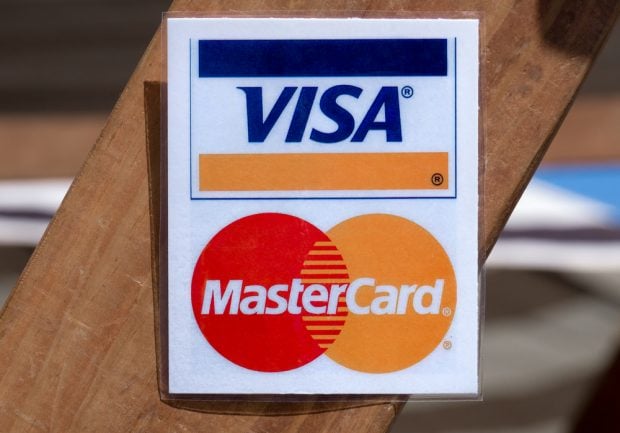ARLINGTON, Va. – As credit unions have added increasing numbers of ATMs, and as point of sale transactions have become steadily more popular with cardholders, credit unions have found keeping up with their ATM processes steadily more complicated and expensive. Now three very different types of organizations have announced the release of products, services or research which credit unions might be able to use to streamline their ATM and EFT procedures. Wescom Resources Group, a subsidiary of the $2 billion Wescom Credit Union, based in Pasadena, Calif., has announced the availability of what it calls its ATM Deposit Balancing Service. Developed first to streamline the processing at Wescom's 79 ATMs, the service uses automation and software tailored to the credit union's needs and systems to significantly speed up ATM deposit processing, according to Kevin Sarber, vice president of remote and automated services at Wescom. Sarber is also president of the Resources Group. The chief innovation to the process has been to speed the reporting of the checks, Sarber said, and then posting adjustments to member accounts electronically rather than having to have someone manually enter them. The Wescom Resources Group collects the checks and processes them at Wescom's data center and then posts the adjustments electronically in a batch format. The results from each day's deposits are also reported to the credit union in an electronic format. The process worked well enough in-house that the Resources Group attracted interest from – the almost $3 billion Kinecta Federal Credit Union, based in Manhattan Beach, Calif, which has implemented the service. Kinecta, the former credit union for the employees of Hughes Aircraft, has 45 ATMs located not only in California, but also on the east coast. These deposits also have to be delivered to the Wescom data center by a courier service, which slows down their processing but the delay rarely, if ever, is more than one business day, Sarber said. It was this speed and convenience, combined with the customer service more familiar and suited to credit union needs, which won the Resource Group the Kinecta contract away from another third-party vendor that was providing the service. "We have to continually improve and streamline our ATM processes if we want to continue adding more machines," said Kathleen Brehme, vice president of information technology for Kinecta. At the same time Wescom worked to streamline its own deposit taking processes, Chicago-based Bank One began a pilot project of technology that could revolutionize the way all financial institutions deal with their ATM deposits. The $277 billion institution has purchased pilot ATM machines from NCR which image its depositors' checks in the machine and sends the images to the bank's back office for processing. "We don't eliminate the check completely because we still need to send it though the system," said Denise Maxon, manager of ATM development for Bank One. "But the pilot ATMs allow all the validation and adjustments based on the check to be done without ever having to actually have the piece of paper," she said. "It is theoretically possible for a depositor to make a deposit through the ATM and see the deposit credited to their account within an hour or two." Eventually the pilot project will include 10 of the imaging machines, she said, but for now seven are in place, scattered among Indianapolis, Ind., Louisville, Ky, and Columbus, Ohio. The bank plans to run the pilot until late May and study the results of both the new technology and customer acceptance, she added. Maxon said the technology part of the machines, which she estimated cost roughly $42,000 apiece, has worked well. Bank One had help from its ATM driver, Concord, as well as NCR in the certification of the pilot machines, which use software based on Microsoft Windows. She said the bank was also enthusiastic about customer acceptance of the machines, and that they have not only won over customers who already make their deposits through the ATM, but even customers who have been suspicious of the machines. "At first we had a concierge out front," she said of the Indianapolis location, "offering to help introduce customers to the technology, but then when people got used to it the popularity just grew," she added. Maxon thought that customers found the imaging machine safer because part of the deposit system actually involves the customer viewing the image of the front and back of their check on the screen before they finalize their deposit. By looking at the image the customer can verify that the amount is correct, their account number is on the check and that they have endorsed it, she explained. Then, when the deposit is complete, a copy of the imaged check is printed onto the customer's ATM receipt, she added. She also noted that customers have warmed to the new technology without the bank having yet change its hold policies involving the imaged checks, although she said that was the next step and could result in shorter hold periods for checks which have been deposited through an imaging ATM. Meanwhile, EDS has announced a new product that allows credit unions that use the firm's core processing software to completely automate their ATM and EFT processing and balancing and merge the results into their core processing, according to Kendall Workman, director of EFT services for EDS. Previously a credit union would have to manually balance the data from its core processing functions with the data from it EFT processor and other sources, explained Kendall Workman, director of EFT services for EDS. But with the new EDS product, a credit union that uses an EDS product for its core processing can automate that tedious balancing procedure and make something that might have taken hours before take only minutes now. Workman said EDS' new product was unique in that it accepted data automatically from an external source, such as a credit union EFT processor, and then automated the validation and balancing of that data. "Credit unions that use our system will not have to have credit union members sitting in back rooms with calculators and rows of numbers," he said. But he also noted the new product still left human beings in control by requiring someone trained and registered on the product to be present and to give permission, through a series of touch screens, for each of the steps of the process to continue. The innovation, which carries an installation fee and then a volume fee which will depend on a credit union's transaction volume, he said, is especially important because of the increasing popularity of point-of-sale transactions and ATMs. As the number of these grows, credit unions will have to have a way of streamlining an adjustment process which otherwise continually draws more employee time and expense. That increased ease and efficiency has certainly been part of what the $275 million Olin Community Credit Union, headquartered in Bethalto, Illinois, has experienced, according to Rob Blacklock, credit union controller. Olin has five ATMs and 15,000 ATM and debit cardholders, he said, and their increased activity had meant that each day's balancing had taken the part of an employee's entire day. "There were a few other things our employee did," Blacklock said, "but the bulk of her responsibility was balancing the day's EFT data. Now she can do it in about 20 minutes and then move on to something else." Blacklock had heard about the development of the new EDS product and had volunteered Olin to be one of the institutions that beta tested it, he said. The credit union has had it since September, 2002, and has been very pleased he added. Workman said that EDS felt confident keeping the product tied closely to its core processing product, even though the initial market for it would be limited to several hundred institutions. This product is the kind that will give EDS a significant edge over the competition for credit union processing, he explained. [email protected]
Complete your profile to continue reading and get FREE access to CUTimes.com, part of your ALM digital membership.
Your access to unlimited CUTimes.com content isn’t changing.
Once you are an ALM digital member, you’ll receive:
- Critical CUTimes.com information including comprehensive product and service provider listings via the Marketplace Directory, CU Careers, resources from industry leaders, webcasts, and breaking news, analysis and more with our informative Newsletters.
- Exclusive discounts on ALM and CU Times events.
- Access to other award-winning ALM websites including Law.com and GlobeSt.com.
Already have an account? Sign In
© 2024 ALM Global, LLC, All Rights Reserved. Request academic re-use from www.copyright.com. All other uses, submit a request to [email protected]. For more information visit Asset & Logo Licensing.









